Original text by Marina Belova
Not so long ago I saw a flat metal foil thread in a shop and decided to try it. It is basically a polyethylene + polyester tape dyed in shiny colors that reflect light on both sides. This thread reminds me of tinsel that is used to decorate Christmas trees, although cut in narrower and longer strips. About 5 years ago I tried to embroider with this thread but failed to understand its advantages and disadvantages.
Metallic foil threads are made by almost all manufacturers, big and small alike, but it cannot be easily bought just anywhere. The one I'm using today is a Chinese WonderFil.
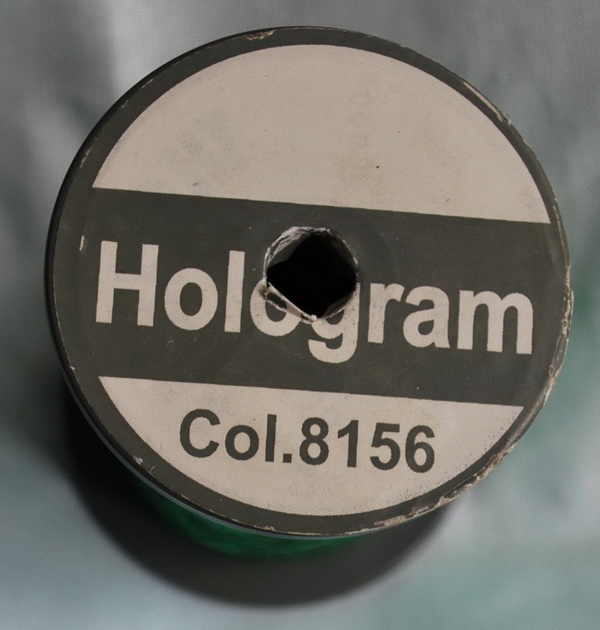
Manufacturers tend to use different words for this type of threads: Glitter (Gunold), Sulky Holoshimmer (Gütermann), Hologram (WonderFil), Spectra (Madeira). But no matter how it is called, it looks pretty much the same: a thin sparkling strip that glitters in the light. The only thing that varies is the way of winding it on a spool/bobbin (straight or cross). To know how the way of winding affects the embroidery, click here. This is directly relevant to what I'm talking about because all manufacturers except Gunold wind their bobbins straight, which leads us to buying a winding device or making it ourselves.
This is how the thread looks from the front:
This is how it looks from the side:
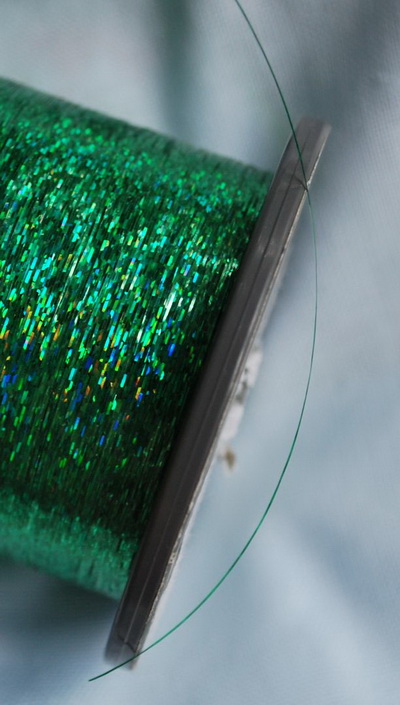
As usual, what intrigues me the most is that there is no information on how to work with such threads if you discard generalizations. But you can learn something from the open sources as well, there is no need to reinvent the wheel every time: So, the technical recommendations are the following:
- In case a spool is straight-winded, make sure that the thread comes off of it in the right way.
- If the spool is cross-winded, you can cover it with a net like the one used for metallics, because the thread will twist a great deal. See the Gunold's video on the subject. There you can find some instructions that may interest you before you start working on your first test piece. For example, a needle should be marked DBx7 instead of a DBxK5 all of us are accustomed to. Reduce the tension.
- Bobbin thread thickness: 120–150.
- A #75–80 needle (like the one used with metallic threads) is preferable. Madeira even suggests using #90.
Design creation and digitizing tips:
- Use big designs
- And long stitches
- I would also advise reducing density a little bit, as one does when working with metallics.
So, I created a design and embroidered this Christmas tree:
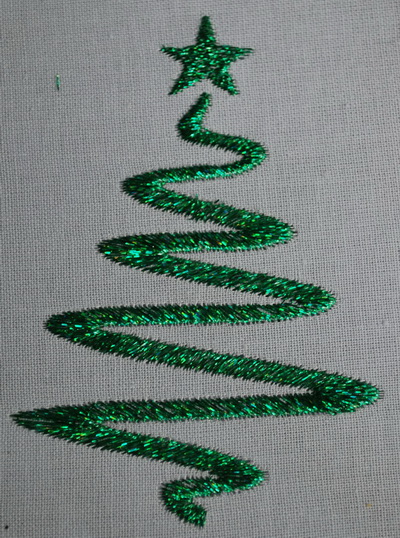
While digitizing, I didn't include any extra steps except making stitches longer, but it took me a great deal of time setting the right tension because this thread behaves in a different way from the ordinary ones, and you have to pay close attention to prevent breakage. But the resulting look of the embroidery is worth it – it's much more lustrous than the one embroidered with metallic threads. The very thing you need for Christmas and New Year designs.
Edited by Irina

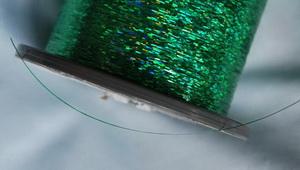
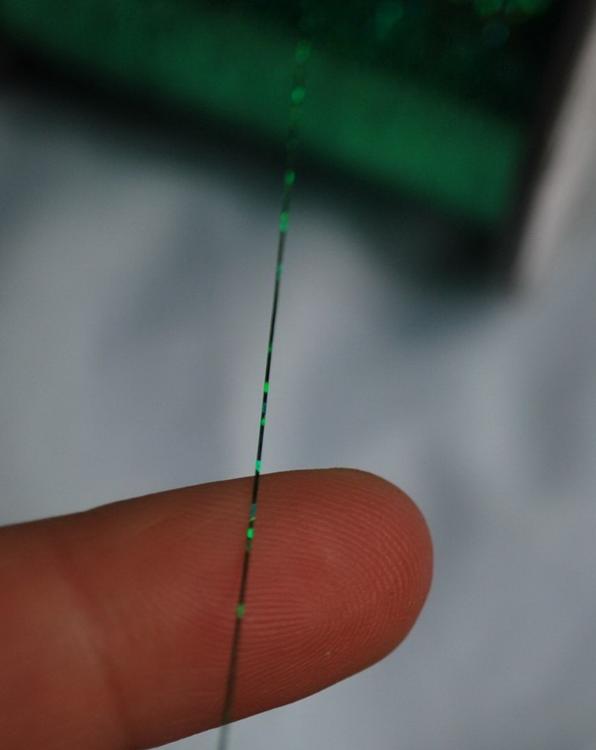

There are no reviews to display.